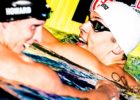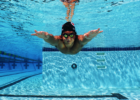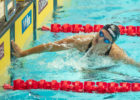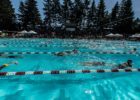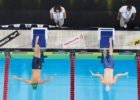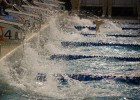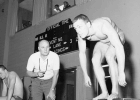The Race Club Hosts Free Webinars April 23rd and 24th
Join us for a FREE Webinar April 24th, 1 PM EST, with Alabama Swimming Head Coach Coley Stickels. Coley is known for his innovative dryland routines.
Comments Off on The Race Club Hosts Free Webinars April 23rd and 24th
The Race Club Hosts Free Webinars Thursday and Friday With Olympians
The Race Club Hosts Free Webinars with Olympian Kim Vandenberg on Thursday and with Alabama Swimming coach Coley Stickels and Olympian Ryan Held on Friday.
Comments Off on The Race Club Hosts Free Webinars Thursday and Friday With Olympians
The Race Club Hosts Free Webinar Friday with Coley Stickels, Gary Hall Sr.
The Race Club is hosting a free webinar with Head Coach of Alabama Swimming, Coley Stickels, on Friday, April 3, at 1 p.m. ET.
Comments Off on The Race Club Hosts Free Webinar Friday with Coley Stickels, Gary Hall Sr.
Reducing Frontal Drag, Racing Caps
To compete in swimming at your very best, every possible effort should be made to reduce frontal drag during your race.
Comments Off on Reducing Frontal Drag, Racing Caps
Turn Techniques Part 1: When to Start the Dolphin Kick
There are 3 controversial topics regarding the dolphin kicks taken off each wall on turns: when to initiate the first and final kicks and how many to take.
Comments Off on Turn Techniques Part 1: When to Start the Dolphin Kick
Reducing Frontal Drag – Tech Suits
Frontal drag is the enemy of the swimmer and reducing it needs to be a primary objective. Since tech suits are not inexpensive, are they worth the investment?
Comments Off on Reducing Frontal Drag – Tech Suits
Swimming Efficiency – What Does It Mean?
Swimming efficiently is important and without it, we probably won’t win a race. Coaches tend to equate swimming efficiency with speed. They are not the same.
Virata Aperta: Come Eseguirla Al Meglio Nello Stile Rana E Farfalla
Virata Aperta: I consigli di Gary Hall Sr. per eseguire al meglio quetsa particolare virata nello stile rana e nello stile farfalla
The Race Club Becomes an Official Partner of U.S. Masters Swimming
USMS members will receive free access to The Race Club’s subscription content and opportunities to be in swimming clinics led by Gary Hall Sr.
Comments Off on The Race Club Becomes an Official Partner of U.S. Masters Swimming
The Coupling Motions of the Start: The Arm Swing
There are three principal coupling motions on the start; the head lift, the arm motion and the back leg kick up in the air.
Comments Off on The Coupling Motions of the Start: The Arm Swing
A Great Pearl for Faster Freestyle Flip Turns
With the freestyle flip turn, we break the turn down into four important parts; the approach, the flip, the underwater and the breakout.
Why Use a High Octane Freestyle Technique?
At The Race Club, we advocate using High Octane Freestyle recovery in the sprint (50 meter) event and at the end of all freestyle (and IM) races.
Comments Off on Why Use a High Octane Freestyle Technique?
How to Determine Your Ideal Stroke Rate
The velocity of a swimmer in any stroke is determine by the swimmer’s stroke rate (SR) multiplied by the swimmer’s distance per stroke (SR x DPS).
Comments Off on How to Determine Your Ideal Stroke Rate
The 1976 Summer Olympic Games of Montreal
Courtesy of Gary Hall Sr., 10-time World Record Holder, 3-time Olympian, 1976 Olympic Games US Flagbearer and The Race Club co-founder. Part I:…
Comments Off on The 1976 Summer Olympic Games of Montreal
This Drill Turns Non-Swimmers Into Swimmers
This week we feature my favorite drill, the six kick, one stroke drill using fins and a low-octane or bent-arm recovery. I love the drill because it is one of the few drills that teaches swimmers three important fundamentals, rather than just one.
Comments Off on This Drill Turns Non-Swimmers Into Swimmers
